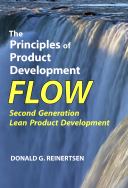 Okay, okay, we all know that “jumped the shark” jumped over itself several years ago, but there has not yet arrived an adequate replacement for the tired phrase. But the question remains, has Open Innovation (OI) reached the level of maturity (or maybe “saturation point”) where it starts to become obscured by attempts to apply it outside of it’s original boundaries?
Okay, okay, we all know that “jumped the shark” jumped over itself several years ago, but there has not yet arrived an adequate replacement for the tired phrase. But the question remains, has Open Innovation (OI) reached the level of maturity (or maybe “saturation point”) where it starts to become obscured by attempts to apply it outside of it’s original boundaries?
Case in point, I submit the following article: “How Ad Agencies Can Make the Shift to Open Innovation,” which appeared on Bloomberg’s website on March 20. Jumping on the opportunity to piggyback on the mainstream promotional saturation for the upcoming season premiere of the A&E hit TV show, Mad Men, which I am, in turn, doing myself by writing this post, the article examines the crowdsourced Superbowl ad for Doritos as an example of OI in advertising.
While it’s clear that the Internet and social media have forever changed the way companies interact with markets, there really is nothing that revolutionary about what Doritos did. Of course, the same can be said for all of Open Innovation, as many like to point out that all it does is put a new spin on the strategic partnerships and alliances that have been part of the business world forever. Having customers create and vote on marketing campaigns is an age old technique, it’s just that Facebook and Twitter now provide greater reach and efficiency than print ads and broadcast commercials. The methods remain pretty much the same, it’s the tools that change.
The many public successes of Open Innovation will likely keep it as an active term for product development techniques that involve one or more parts of the value chain as an integral player. After all, the attractiveness of OI is what drives it being borrowed to describe other similar activities such as in the ad world.
Links:
- Two-Day Workshop: Open Innovation Master Class with Gene Slowinski – June 20, 2013 in Chicago – Register by April 19 and Save $100!





